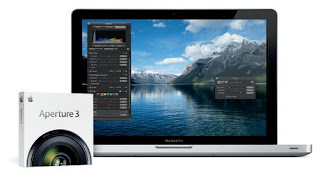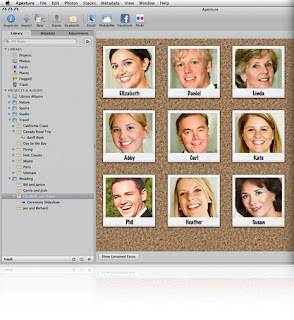
The Sony Ericsson Xperia X10 is the company's first Android-powered smartphone. It was announced late last year after quite a number of leaks, some of which suggested it would be called the X3. When the first Xperia, the X1, was announced, it took the company almost a whole year to start selling it. This, we felt, was a huge misstep because the positive buzz surrounding it cooled quickly during that period. This time, if things go as planned, the X10 will appear in stores at the start of Q2, about five months after its unveiling--a much more reasonable waiting time for those who have taken an initial interest in it. Here's our full review of this smartphone.
Design
If you look at it straight on from the front, the X10 might seem very angular. Viewed from the side and back, however, it has lots of curves. This can be seen in the shape of the back battery cover and along the chrome trimmings on the sides. While not unattractive, some may not like the plastic material used on the X10. The glossy finish attracts fingerprints readily and those with oily faces may have to wipe smudges off the phone after calls.
The X10 measures 119 x 63 x 13mm and weighs 135g--its large footprint is due to its generous 4-inch capacitive display. While not unusually heavy, this smartphone may feel a little large in the hands for some. For comparison's sake, the HTC HD2, which comes with a 4.3-inch screen, measures 120.5 x 67 x 11mm and weighs 157g.
Another point to note about the the X10's screen is that it has a resolution of 854 x 480, which can also be classified as WVGA and is slightly different from the 800 x 480 pixels we are more accustomed to. Though this will appear a little wider when held in landscape mode, it shouldn't make too much of a difference during actual use of basic features or third-party apps that support multiple resolutions.
There are only three physical buttons below the touchscreen. These bring up the options for Menu, Home screen and back to the previous page. The power button, 3.5mm audio jack and micro-USB port sit along the top, while the volume bar and camera shutter are on the right edge.
It took a bit of effort to pry open the battery cover, partly also because we were afraid of breaking the catches. To be fair, this worked more in favor of the X10 as it kept the device in a solid block without any moving parts. The microSD card slot is behind the battery cover and Sony Ericsson is bundling an 8GB flash media with the X10, so that's plenty of memory. Take note that you do have to remove the battery to access this slot, so it's necessary to turn the phone off when swapping cards.
Features And User Interface
Connectivity-wise, this Xperia smartphone is fully featured with HSPA, Wi-Fi, Bluetooth and GPS for satellite navigation. It runs on Android 1.6, codename Donut, and thus comes with all the standard Google-centric features including Gmail, Google Maps and YouTube. Aside from that, some third-party applications have been preinstalled including Moxier Mail for Microsoft Exchange support.
Unlike HTC which has almost completely overhauled the Android software with its custom Sense user interface, Sony Ericsson's new Timescape and Mediascape features merely scratch the surface. In idle mode, the screen will display the cellular network, time, date, signal strength, battery status and new notifications. To unlock, you'll have to trace the onscreen triangle on a quadrant and dock it into position. When a call comes in, onscreen buttons let you accept or reject the call. We were initially surprised there wasn't an option to silence the phone without rejecting the call, but later found that this can be done by pressing the volume control key.
Timescape aggregates all your communications on a single pane. A row of 3D desktop icons sit on the bottom of the panel and swiping left or right brings you to various applications. These include your online Facebook and Twitter accounts, music you've just listened to, most recent pictures, email, text messages and call history. Tapping on one of the 3D cards will bring it up to the front. From here, the infinite icon combines all the interactions you've had with someone on a page so you can see your text messaging conversation with the person, as well as Facebook or Twitter updates at the same time.
Though Timescape is an interesting and visually attractive way to present all your activities on the smartphone in one glance, we weren't too sure about its usefulness. For example, when you tap on a tile to respond to a Facebook status update or Twitter tweet, you are brought to the mobile version of Facebook or Twitter on your browser.
This is a problem because there are fully featured apps for these social-networking services that are much more effective than the mobile sites. In fact, we dare say hardly anyone accesses m.twitter.com or touch.facebook.com on an Android phone, but instead many use programs such as Seesmic, Twidroid and Facebook for Android. After an initial novelty phase, we barely fired up Timescape at all and went straight to the dedicated apps to access social-networking services.
Mediascape serves a different purpose of giving easy access to your music, videos and pictures. These can be media which resides on the memory card or online. For music, this syncs with the PlayNow music store. As for pictures, you can link photo albums from Facebook, Picasa and Flickr.
The Webkit-based browser renders pages quickly over 3G and the smooth scrolling reminds us of Safari on the iPhone. Unfortunately, we didn't find multitouch features for resizing Web pages or images. On a side note, the Windows Mobile 6.5-based HTC HD2, which has a similarly fast chip, is fluid enough to match or surpass the iPhone for Web browsing.
Text input on the X10 was a mixed bag for us during our tests. Sony Ericsson created its own onscreen QWERTY keyboard, which includes soft arrow keys to control a cursor in text fields. This is necessary because trying to put a cursor in a specific spot on Android can be difficult using just your fingertips. The custom keyboard provided a few convenient shortcuts such as a dedicated full-stop key that doubles as a comma key when tapped twice. What we didn't like was the two rows of word suggestions which made the interface very busy. Fewer suggestions would have been better as long as they are good ones. Compared with an iPhone, the speed and accuracy of typing on this Android phone paled in comparison. This is unsurprising as no full touchscreen phone has been able to match Apple's handset in that respect so far.
Photo from the X10.
The camera on the X10 has an 8.1-megapixel sensor and an LED for lighting up dark subjects. We really liked the camera interface which comes with features like face detection and touch to focus. Recently snapped photos appeared in a bar on the bottom of the screen and the responsive interface made reviewing and deleting shots easy. Photo quality was also good for a mobile phone with colors rendered accurately and photos well exposed even indoors.
Performance
The 1GHz Snapdragon processor in this Xperia did well to keep things chugging along during our use. Although when compared with a Nexus One, the latter felt snappier.
Call quality was good and we had no issues with reception during our review period. Battery life wasn't that great, giving us about 1.5 days of use on a single charge even with Gmail autosync turned off.
Conclusion
First, the good news. We already know that Sony Ericsson will be updating the software on the X10 with Android 2.x (this may or may not be 2.1) in the second half of this year. This will give it user improvements such as a combined inbox for multiple accounts, native Exchange support and multitouch. We won't be surprised if the company decides to improve its Timescape and Mediascape software in the process, too.
Now, the bad news. Though Sony Ericsson hasn't given a confirmed price, estimates are this will retail for over S$1,000. This is very steep considering products like the Nexus One is going for much less. Even the HTC HD2 with its massive 4.3-inch display sells for just over S$900.
The 4-inch display may be a draw, but this isn't much larger than the Nexus One's 3.7-incher. We also didn't feel the custom software really gave the Xperia much of an edge, though the 8-megapixel camera could be a compelling feature for some.
Nonetheless, the Xperia X10 is a viable option for those who have no access to something like the Nexus One. The Sony Ericsson will be available from operators, so subsidies with mobile contracts will allow for lower prices. Those interested should expect to see the handset in stores and from telcos in Asia Pacific come early Q2.


































